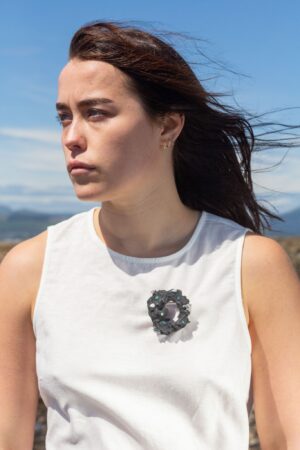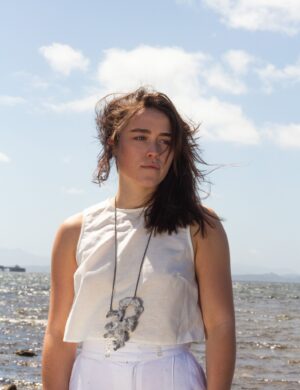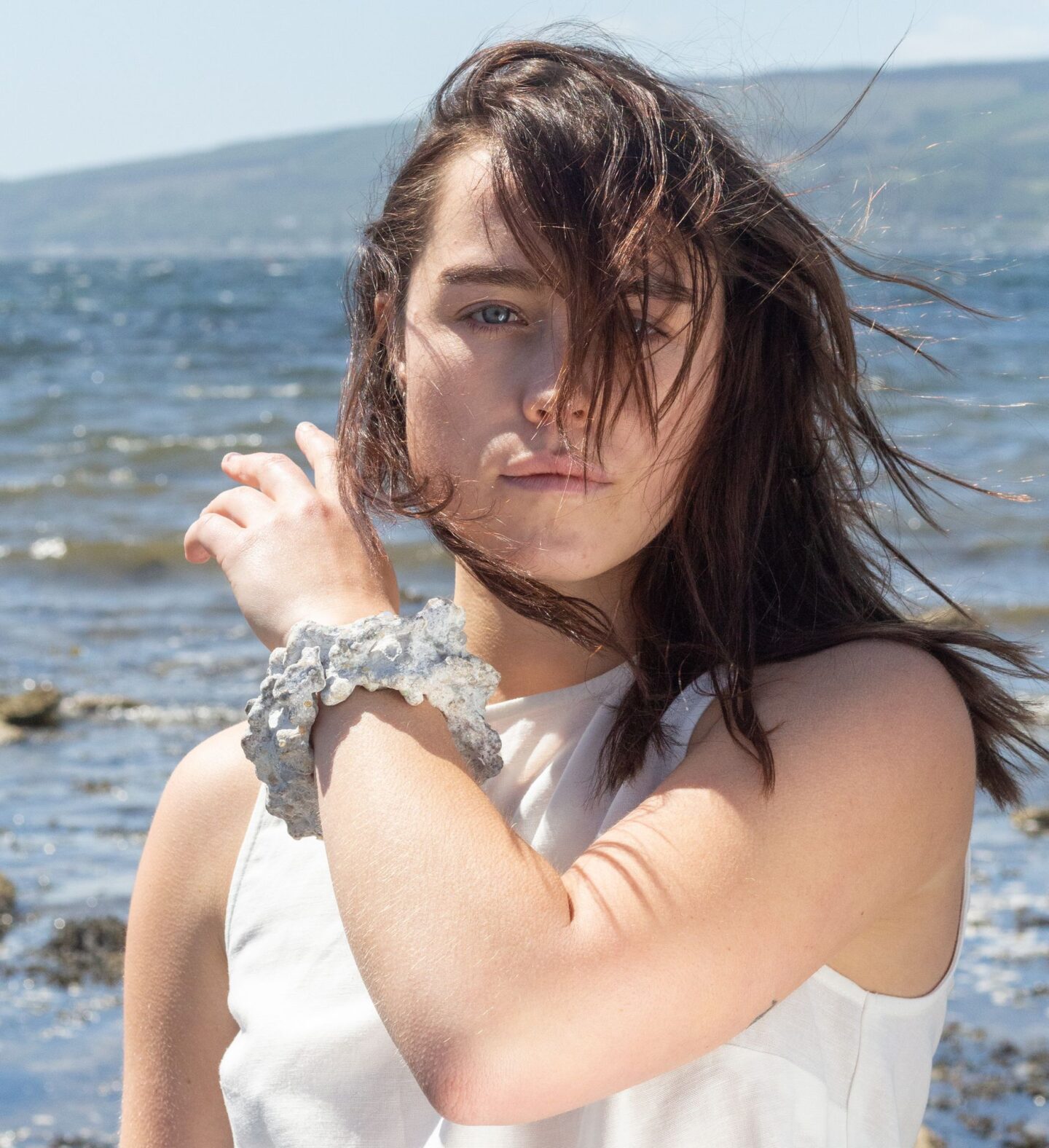
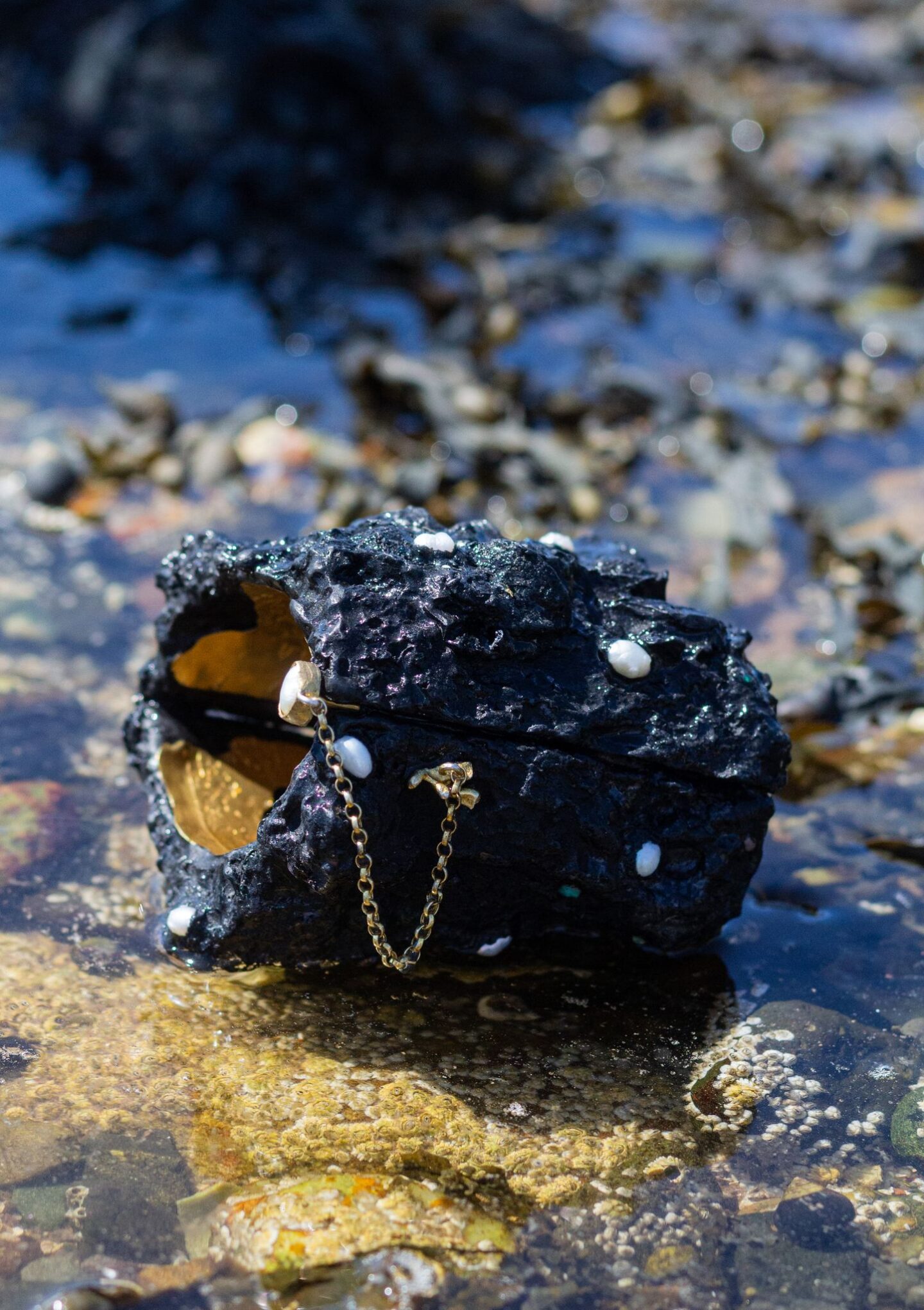
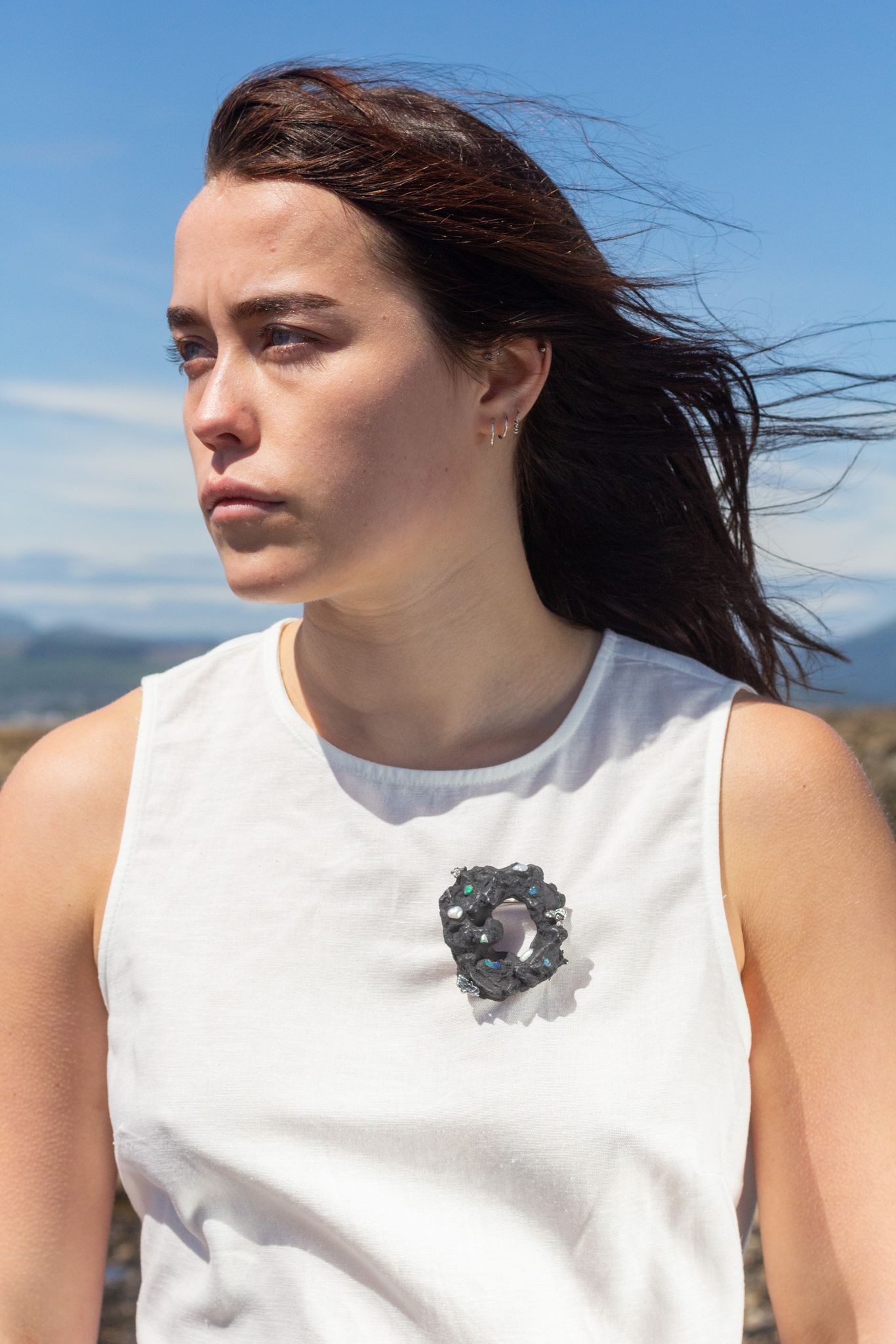
Sustainable jewellery design made using natural found objects in an innovative way.
Reflecting on Rebecca Solnit’s book “Wanderlust: A History of Walking” she highlights the importance of wandering: “That is to say, it is the body that moves but the world that changes, which is how one distinguishes the one from the other: travel can be a way to experience this continuity of self amid the flux of the world and thus to begin to understand each and their relationship to each other.” This resonates with me as I spent my childhood immersed within the coastal landscape, which has resulted in my deep understanding and knowledge of the place as well as the memories and connections I have made with other people who shared this space with me growing up. For me as a designer and maker today, it highlights how I use walking and foraging as a way to escape reality, and to explore new ideas and forms of inspiration for my practise.
Throughout my final year I have been heavily influenced in exploring materiality; the pieces making up my final collection are constructed of my own naturally derived precast material that I use to cast with, using alginate and silicon moulds mimicking rock formations of the landscape. This allows me to create new objects, or artifacts/fossils, that reflect my past lived experiences from a new perspective. Depending on the found objects I retrieve and combine together when making this material, results in a variety of different shades and hues giving me the freedom to make my own pigments to colour my pieces. There is one piece in the collection where I used spray paint to introduce colour, however this was a crucial turning point for me as I believed that embracing my found objects natural qualities was more interesting, as well as a more sustainable way to work. As I embark on my ethical making journey, I aim to reduce the amount of waste as much as possible by using silicon and alginate moulds that I can reuse, as well as melting down scrap silver collected from previous years to make small, decorative water casts. A variety of precious and semi-precious stones are also included in my work to enhance the textural quality of the Scottish west coast, while enhancing the visually glistening and imaginative aspect of my work.
The title of my degree show collection, “Terra Incognita”, translates to unexplored terrain, or the unknown, which sums up my final year collection as my work plays with the viewers perception when considering its aesthetic, titles and materials. I use a range of found materials from the coastal landscape, as well as processes such as casting, to create a hybrid of old and new experiences of the landscape. Through carefully titling my pieces, I aim to create my own reality of mysterious and unusual looking found objects or amulets, leaving the view wanting to touch and hold them close.
